 by our College Data Analytics Team
by our College Data Analytics TeamVermont Tech total enrollment is approximately 1,520 students. 829 are undergraduates and 2 are graduate students.
Male/Female Breakdown of Undergraduates
The full-time Vermont Tech undergraduate population is made up of 45% women, and 55% men.
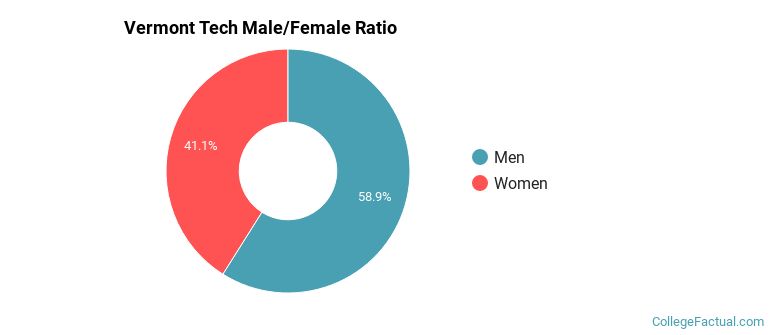
For the gender breakdown for all students, go here.
Vermont Tech Racial/Ethnic Breakdown of Undergraduates

| Race/Ethnicity | Number |
|---|---|
| White | 703 |
| Multi-Ethnic | 36 |
| Hispanic | 24 |
| Black or African American | 21 |
| Unknown | 16 |
| International | 14 |
| Asian | 11 |
| Native Hawaiian or Pacific Islander | 0 |
See racial/ethnic breakdown for all students.
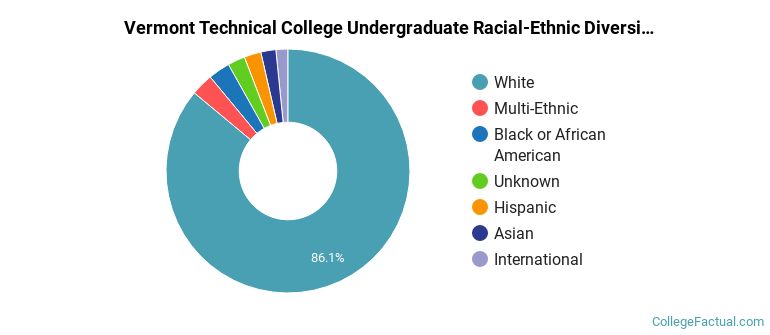
| Race/Ethnicity | Number |
|---|---|
| White | 1,282 |
| Multi-Ethnic | 59 |
| Black or African American | 41 |
| Unknown | 40 |
| Hispanic | 39 |
| Asian | 26 |
| International | 26 |
| Native Hawaiian or Pacific Islander | 0 |

There are approximately 769 female students and 751 male students at Vermont Tech.
Vermont Tech ranks 1,595 out of 2,183 when it comes to geographic diversity.
15.81% of Vermont Tech students come from out of state, and 1.38% come from out of the country.
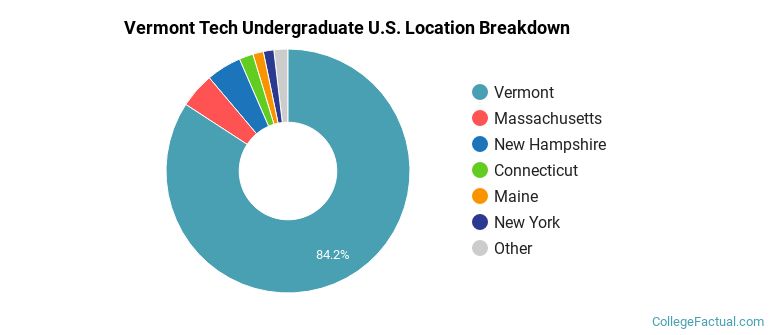
The undergraduate student body is split among 10 states (may include Washington D.C.). Click on the map for more detail.
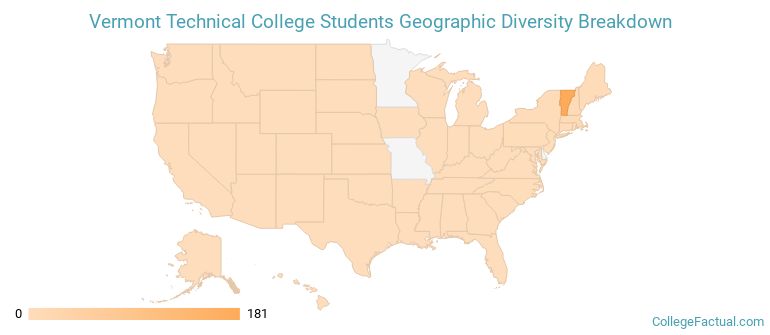
| State | Amount |
|---|---|
| Vermont | 181 |
| Massachusetts | 10 |
| New Hampshire | 10 |
| Connecticut | 4 |
| Maine | 3 |
Students from 8 countries are represented at this school, with the majority of the international students coming from Saudi Arabia, Australia, and Cayman Islands.
Learn more about international students at Vermont Tech.
A traditional college student is defined as being between the ages of 18-21. At Vermont Tech, 38.37% of students fall into that category, compared to the national average of 60%.
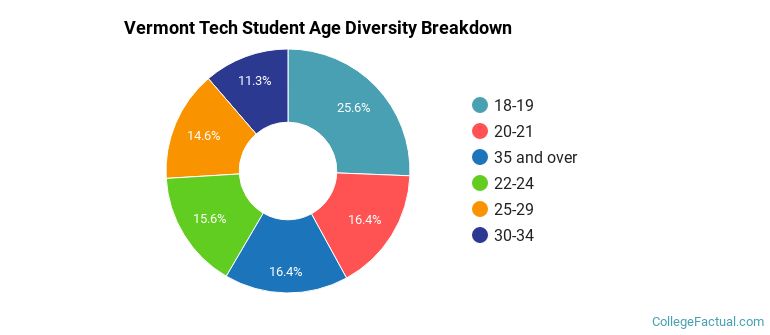
| Student Age Group | Amount |
|---|---|
| 18-19 | 378 |
| 20-21 | 242 |
| 35 and over | 242 |
| 22-24 | 230 |
| 25-29 | 216 |
| 30-34 | 167 |
| Under 18 | 0 |
Footnotes
*The racial-ethnic minorities count is calculated by taking the total number of students and subtracting white students, international students, and students whose race/ethnicity was unknown. This number is then divided by the total number of students at the school to obtain the racial-ethnic minorities percentage.
References
Department of Homeland Security Citizenship and Immigration Services
Learn more about how College Factual creates their Diversity Rankings.